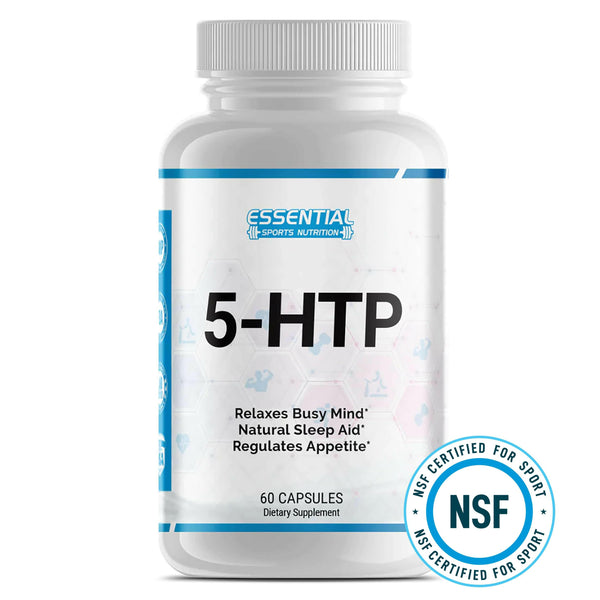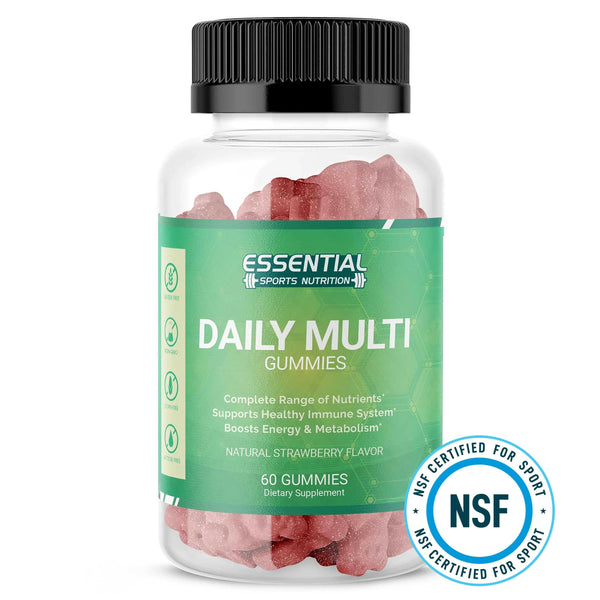Wrist and Thumb Pain? Get Relief from De Quervain's Tenosynovitis
Wrist and Thumb Pain? Get Relief from De Quervain's Tenosynovitis
Feeling pain on the thumb side of your wrist is not only bothersome but can also stop you from doing your daily tasks. Often, the cause is De Quervain tenosynovitis. This condition brings pain whenever you move your wrist and thumb in ways like twisting your wrist, holding things, or making a fist.
Things like gardening, playing golf or racket sports, or even carrying a child can make this pain worse. Trying things at home such as resting, applying something cold, or taking drugs that reduce swelling might not help. If the pain doesn’t go away, it’s important to see a doctor or a specialist for wrist and thumb pain.

Key Takeaways
De Quervain tenosynovitis is a common cause of wrist pain thumb side.
Pain and discomfort often worsen with repetitive hand movements.
Initial treatments include rest, cold application, and NSAIDs.
Seeing a healthcare provider is essential if symptoms persist.
Avoiding activities that trigger pain can help in managing symptoms.
Understanding Wrist Pain on the Thumb Side
Wrist pain on the thumb side can really change how you do things daily. A key issue in this area is De Quervain's Tenosynovitis. This problem is about swelling in the tendons by your thumb. It’s important to know its causes and what to look out for to deal with it.
What Is De Quervain's Tenosynovitis?
De Quervain's Tenosynovitis tags along with pain in the tendons around the thumb side. Moving your thumb or wrist can really hurt. It often happens to people who repeat the same thumb and wrist movements, like those who garden or play sports.
Common Symptoms
The key signs of De Quervain's are pain, swelling, and trouble moving your thumb and wrist. The pain can get worse when you try to grab or pinch something. Swelling by the thumb side of your wrist might happen too, along with a clicking feeling when you use your thumb.
How It Affects Daily Activities
De Quervain's Tenosynovitis can make simple things hard. Gripping, pinching, or holding stuff can be painful. This makes tasks like writing, typing, or carrying a baby tough. If not taken care of, it could lower wrist movements, affecting how well you live.
This problem is most seen in people between 30 and 50. It's also more likely in women, especially when they're pregnant or taking care of kids. This is because of the repeated movements common in these roles.
Common Symptoms of Thumb Side Wrist Pain
Are you feeling pain in your wrist around your thumb? Knowing the common signs can lead to the right treatment. It allows for choosing the best way to fix the issue.
Pain and Swelling
The main signal is pain and swelling near the base of your thumb. This area hurts more when you grip or pinch things. The pain might spread to your forearm, making everyday tasks hard to do.
Difficulty Moving the Thumb
You might have trouble moving your thumb, especially to grab or make a fist. This makes using your hand and wrist painful. It shows that the pain is coming from the side of your wrist near the thumb.
Clicking or Snapping Sensation
Feeling a click or snap in your thumb is also a sign. This feeling happens when moving your thumb. It’s because of swollen tendons that catch on something when you move your thumb. This is a big sign of a problem like De Quervain tenosynovitis.
| Symptom | Description |
|---|---|
| Pain and Swelling | Visible inflammation and pain at the thumb’s base, spreading up the forearm |
| Difficulty Moving the Thumb | Challenges in thumb mobility, hindering tasks like grasping or pinching |
| Clicking or Snapping Sensation | Thumb "sticking" or a "stop-and-go" motion during movement |
Causes of Wrist Pain Near the Thumb
It's key to know what leads to wrist pain by the thumb. Many things can cause this pain, like issues with the thumb-side tendons.
Repetitive Motion Injuries
Doing the same hand and wrist activities over and over can hurt your wrist. This often happens when you type a lot, play sports, or lift heavy things. All this action can strain the tendons on the thumb side, leading to pain and swelling.
Long term, these activities might cause inflammation and pain.
Inflammatory Conditions
Rheumatoid arthritis and similar conditions can make your wrist really hurt. With these, the tendons can get bigger and less flexible. This leads to more pain in the thumb area. Proper care of these conditions is very important to stop them from getting worse.
Direct Trauma
A sudden hit to the wrist from accidents or falls can cause a lot of pain. It might hurt the tendons on the thumb side. This can make your wrist swell and immediate care is often needed.
Figuring out what's causing your wrist pain near the thumb is the first step. It could be from doing movements over and over, from conditions like arthritis, or from an injury. Knowing the exact cause is crucial for the best treatment and to stop the pain.
Risk Factors for Thumb Side Wrist Pain
Several things lead to wrist pain at the base of the thumb. It's key to know these to stop or manage it. Let’s talk about the main risk factors.
Age and Gender
People from 30 to 50 often face thumb joint pain. And women tend to get it more, especially during and after pregnancy. This is due to hormonal shifts.
Occupational Risks
Jobs or hobbies needing a lot of wrist and hand use are risky. This includes typing, gardening, and playing instruments. Finding and fixing these risks can lessen thumb side wrist pain.
Pregnancy and Postpartum
Pregnancy and postpartum can make thumb joint pain worse. Hormones and keeping more fluids can cause extra discomfort. Women in these times might need special care for their wrists.
Diagnosing Wrist Pain on the Thumb Side

Having wrist pain on the thumb side for a long time needs a careful diagnosis. Doctors use several methods to find out the cause. They check if it's tenosynovitis.
Physical Examination
Your doctor will look at your wrist and the way it moves. They will press on different areas to find where it hurts. Pain and swelling are important signs of wrist pain near the thumb.
Finkelstein Test
The Finkelstein test is a special check for De Quervain tenosynovitis. You'll be told to grip your thumb with your fingers and twist your wrist. If this causes strong pain, it may be tenosynovitis.
Imaging Tests
X-rays or MRIs may be suggested to see inside your wrist better. These tests provide detailed pictures of what's happening. They help confirm if you have tenosynovitis and exclude other similar conditions.
Non-Surgical Treatments for Thumb Side Wrist Pain
Thumb side wrist pain can be treated without surgery. Several approaches can reduce pain and improve function. These methods don't involve any operations.
Rest and Activity Modification
Starting with rest and avoiding painful activities can help a lot. It's crucial to skip things like repetitive wrist movements. This step lets the inflammation go down and is really important.
Splinting and Bracing
Using a splint or brace is often suggested to help with the pain. These devices keep the wrist from moving too much. This helps the injured area heal better.
Medications and Injections
NSAIDs and injections play a big role in treatment. NSAIDs can reduce pain and swelling. In tough cases, a corticosteroid shot into the tendon's sheath can help a lot too.
| Treatment Method | Description | Benefits |
|---|---|---|
| Rest and Activity Modification | Minimizing activities that trigger pain | Reduces strain and allows inflammation to subside |
| Splinting and Bracing | Immobilizing the wrist with a splint or brace | Prevents further strain and facilitates healing |
| Medications and Injections | Use of NSAIDs and corticosteroid injections | Alleviates pain, reduces swelling, and decreases inflammation |
Surgical Treatment Options
Severe wrist pain on the thumb side that won't go away with other treatments might need surgery. The main aim of de Quervain surgery is to reduce pain. This is done by releasing the sheath around the tendons.
The surgery includes:
Protecting nearby nerves
Removing inflamed tissue
Ensuring enough space for tendon movement
After surgery, most people feel a lot better and can use their hand more normally. But, surgery always has some risks. For example, there could be infections. People with diabetes might find healing the wound to be harder than usual.
There's a clear cut between treatment options. Let's explore surgical and non-surgical routes:
| Treatment Options | Non-Surgical | Surgical |
|---|---|---|
| Pain Relief | Medications and Injections | Immediate reduction of pain due to tendon release |
| Recovery Time | Varies, typically weeks to months | Varies, but generally quicker functional recovery |
| Risks | Side effects from medications | Infection, wound healing issues |
Choosing between these treatment options isn't easy. It needs a deep talk with your doctor. Together, you can choose what's best for you.
Home Remedies for Thumb Side Wrist Pain Relief
Dealing with thumb side wrist pain is hard, but there are ways to find relief at home. You can use cold packs and heat, do some exercises, and stretch to help your wrist move better. These methods are simple but very effective in making the pain less and improving your wrist's function.
Cold Packs and Heat Therapy
Ice packs can help a lot with swelling and stop inflammation by making blood vessels tight. Just place a cold pack on your wrist for 15-20 minutes a few times a day. Heat therapy, on the other hand, relaxes your muscles and boosts blood flow, which is great for healing. You should use a warm compress for 20 minutes, but make sure it's not too hot.
| Therapy Type | Application Time | Benefits |
|---|---|---|
| Cold Packs | 15-20 minutes | Reduces swelling and inflammation |
| Heat Therapy | 20 minutes | Relaxes muscles and improves blood flow |
Stretching and Strengthening Exercises
It's important to do exercises to make your wrist and thumb better. Stretching helps your wrist move more easily, and using a soft stress ball strengthens the muscles around it. Do these exercises every day to help heal and avoid more pain.
Preventing Future Episodes of Wrist Pain

Stopping wrist pain is key for an easy, painless day. Make your work and home fit better for you to stop wrist pain.
Ergonomic Adjustments
Fix your workspace to keep your wrists comfy. Use gadgets like special keyboards and mouse pads. They make a big difference in keeping wrists healthy.
Proper Lifting Techniques
How you lift things matters a lot. Use your whole hand, not just your thumb and wrist, to lift. This spreads the weight, easing stress on your wrists.
Implementation Strategies
Learn how to move your body right and keep at it. This small effort can stop wrist pain before it begins.
Line up your work area so your wrists are straight when typing or clicking.
Take breaks and stretch your wrists often.
Lift things with your whole hand and keep your wrist straight.
Doing these things means you'll feel better and be less likely to have wrist pain.
When to See a Doctor for Thumb Side Wrist Pain
Severe thumb and wrist pain can make simple tasks hard. If it's getting tough to do daily activities, and home fixes don't help, it might be time to see a doctor.
Seeing a doctor about your wrist pain has its benefits. You could get a clear diagnosis and a plan just for you. This can help get your life back on track.
Conclusion

Wrist pain from De Quervain tenosynovitis can really slow you down. It causes pain, swelling, and problems moving your thumb, especially at the base. Gripping and pinching things may be hard, making the pain worse.
To get relief, diagnosis and a full treatment plan are key. Steps like rest, wearing a splint, and taking medicine are the first defense. Or, you can use cold packs and do special exercises at home. If it's serious, surgery might be an option to stop the symptoms and let your wrist work better.
To keep wrist pain from coming back, it's important to change how you do certain things. This includes lifting things the right way. By doing these changes and seeing a doctor when you need to, you can keep your wrists healthy. You won't just feel better for a bit but for a long time. Staying on top of these steps will keep wrist and thumb pain away for good.
Thumb and Wrist Pain FAQs
Q: What is de Quervain tenosynovitis?
A: De Quervain tenosynovitis is a condition that causes pain along the thumb side of the wrist. It is a type of tenosynovitis that affects the tendons at the base of the thumb.
Q: What are the symptoms of de Quervain tenosynovitis?
A: Common symptoms of de Quervain tenosynovitis include pain at the base of the thumb, swelling, and difficulty moving the thumb and wrist.
Q: How is de Quervain tenosynovitis diagnosed?
A: De Quervain tenosynovitis is typically diagnosed based on physical examination, symptoms reported by the patient, and sometimes imaging tests like ultrasound.
Q: What are the causes of de Quervain tenosynovitis?
A: De Quervain tenosynovitis is often caused by repetitive hand and wrist motions, such as lifting a baby or using a computer mouse frequently.
Q: What are the treatment options for de Quervain tenosynovitis?
A: Treatment options for de Quervain tenosynovitis may include rest, splinting, anti-inflammatory medication, physical therapy, or in severe cases, surgery.
Q: How can I relieve pain associated with wrist pain thumb side?
A: To relieve pain at the base of your thumb and wrist, you can try applying ice, taking over-the-counter pain medication, and avoiding activities that aggravate the pain.
Q: Can repetitive hand and wrist motions lead to developing de Quervain tenosynovitis?
A: Yes, repetitive hand and wrist motions are a common cause of de Quervain tenosynovitis. Activities like gardening, texting, or playing an instrument can contribute to the condition.




























